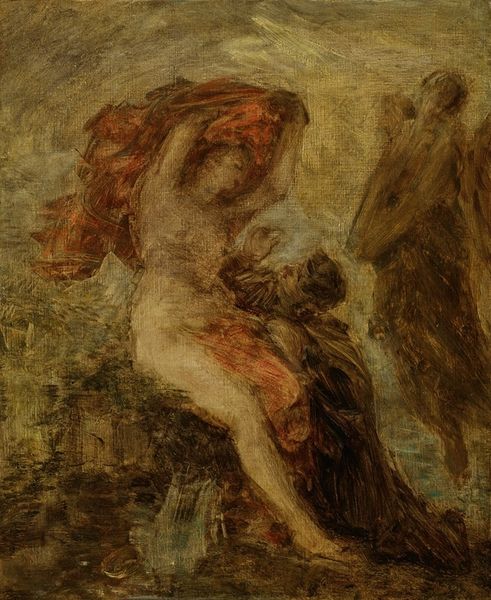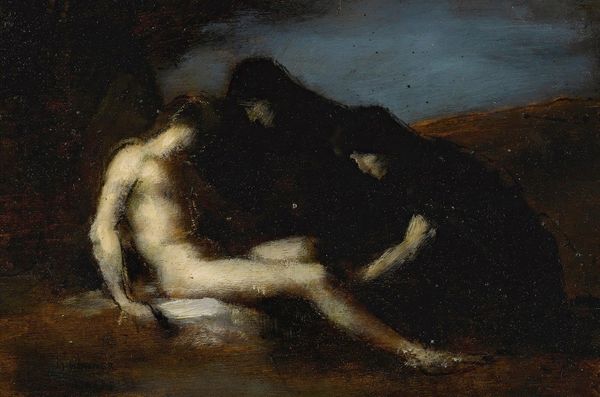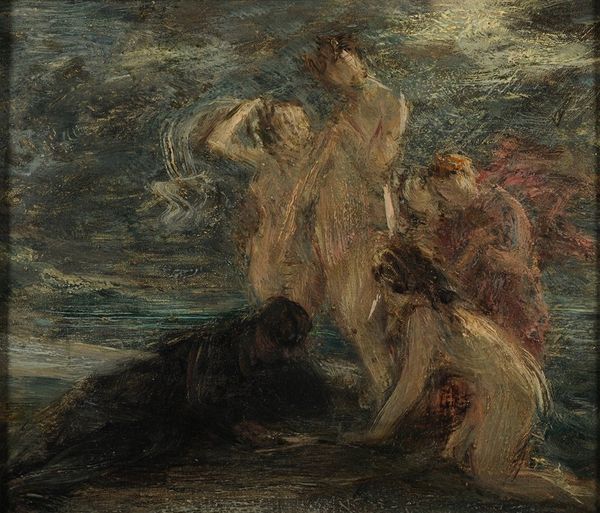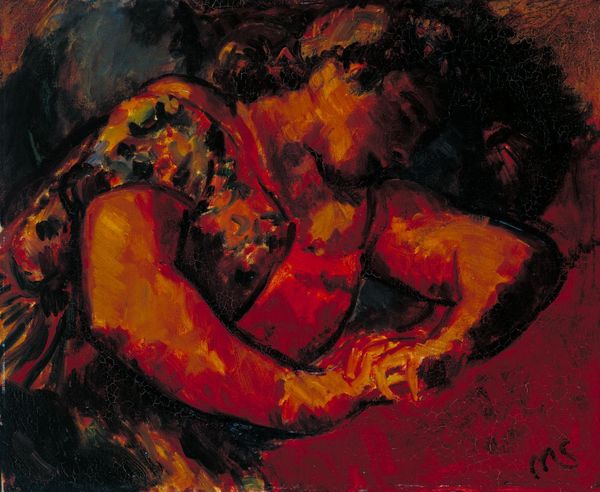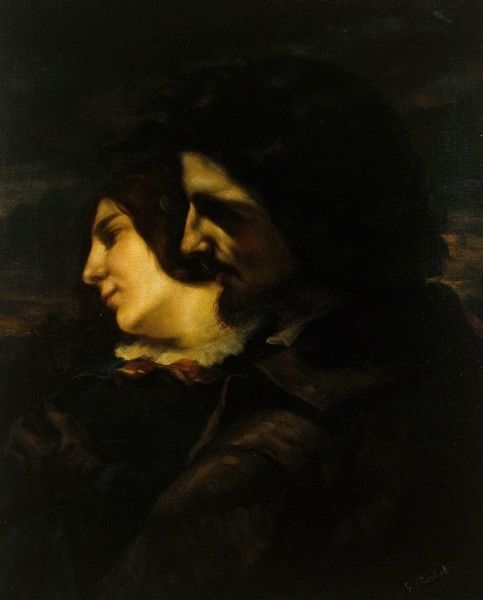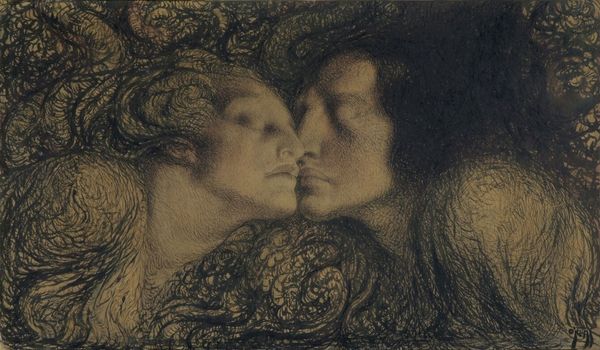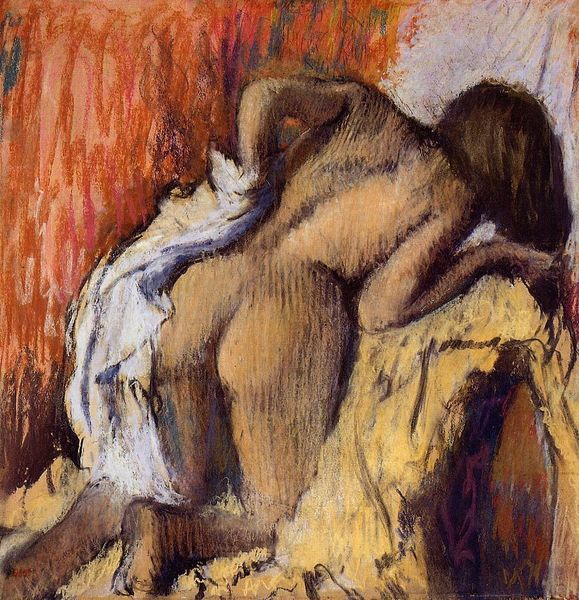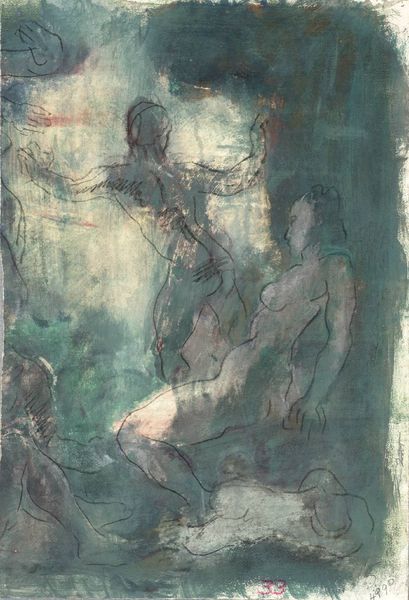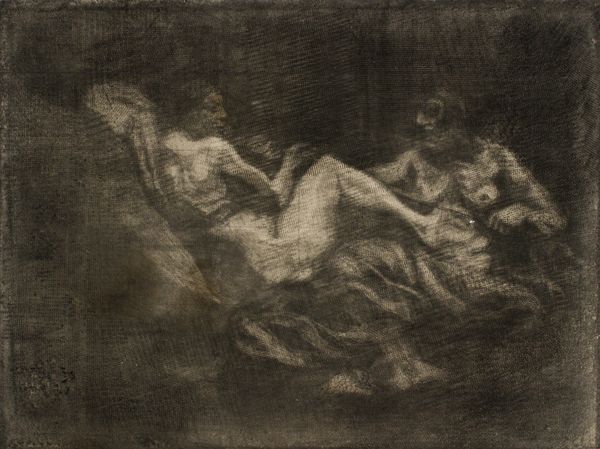
Copyright: Public Domain: Artvee
Curator: Daumier's “La Confidence ou Le Baiser de Judas,” created in 1859, draws you in with its intimate scale. Painted with oils, its rough textures and limited palette—mostly earth tones—emphasize a psychological depth over pure realism. Editor: I'm immediately struck by the furtive air, that palpable tension hanging in the air. It feels as though we've stumbled upon a clandestine encounter, weighted by power dynamics, I think. Curator: Let's unpack that a bit. Daumier, working during a time of immense social upheaval, would have been highly attuned to how these private interactions mirrored larger systemic oppressions. Editor: Exactly! Considering this title is alternatively, "The Kiss of Judas," we’re placed at the site of betrayal, complicity, and the unreliability of appearances. Who benefits, who’s betrayed? It prompts so many urgent questions. Curator: Notice how the painting’s surface contributes to that unease. The thick impasto, those almost frantic brushstrokes... They weren't necessarily trying to present a polished or illusionistic depiction of events here, were they? The act of applying the paint—its weight, its materiality—communicates a kind of interior chaos. Editor: Absolutely, it challenges Romanticism. Daumier isn't interested in some idealized, palatable version of human experience. He reveals the dirt beneath fingernails, so to speak. The lack of idealization really puts into sharp relief the social and moral weight of this encounter. It encourages an ethics of suspicion, wouldn't you say? Curator: It seems Daumier sought to create a space for contemplation that encourages us to investigate the systems in which these figures exist. How they’re consumed, how their labor creates systems, and what they ultimately gain, is central. Editor: Yes, it underscores the urgency of seeing beyond superficial presentations to comprehending those networks of meaning, the inequalities made visible through Daumier’s unsettling, powerfully constructed, compositions. It makes the political personal. Curator: Thinking about these works together helps illustrate a profound historical commentary rendered vividly on a canvas – challenging viewers to reflect. Editor: Leaving us to reflect critically not only on power structures, but the ethical responsibilities we all carry as viewers and social beings.
Comments
No comments
Be the first to comment and join the conversation on the ultimate creative platform.
